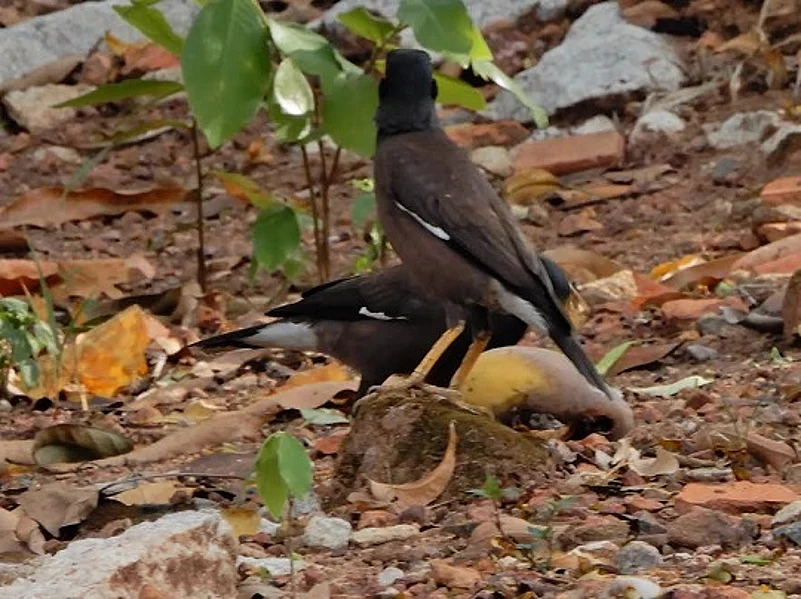To write on mangoes this summer is to bite the cliché and let the juice run over my laptop. However clichéd another piece on mangoes sound, the fruit continues to seduce and compels you to write anyway. Every year, an old essay in my college textbook pops up in my memories and urges me to eat the fruit in the prescribed manner: it tells you to rub the fruit gently and then knock off the end and suck at it till the pulp runs down your gullet in a steady flow.
More importantly, the brave should take the whole mango into their mouth, the essay recommends, and chew the meat and skin and then eject the stone out or some other blah. The only mango that I dare attempt to put whole in my mouth is perhaps the uppumanga (small salted mango pickle) or even smaller kannimanga (the eye-shaped, baby mangoes plucked when their seeds are still tender). Last weekend, a parakeet in my mother’s backyard, filled with the fruit both standing and fallen, showed me yet another way to eat mangoes.
Advertisement
My mother said it was a puliyan (a sour one) but the unconcerned parakeet was merrily breakfasting on it. She was a picky eater and went about pecking the fruit carefully so as not to drop it. Her acrobatics while eating the mango is only for a yogi or the flexible. When she had stripped it clean, the seed was still dangling from the tree. That’s another feat that needs some measure of expertise.

If I went back in time as far as my memory stretches, summer holidays were always liberally seasoned with mangoes, albeit the less exotic ones. It is only in the last decade or so that the exotic varieties from other states, like the alphonso, badami, chaunsa began to flood the Kerala market and my apartment in the city.
Advertisement
My memories of mangoes are intertwined with the ordinary native varieties like the moovandan, kappa, kilichundan, pullichi, kolan etc... neelam was as exotic as it could get. Some of these native varieties have almost become extinct as people prefer the sweeter exotic ones. Though a great effort is being made by a few state government agricultural farms to preserve and propagate about a dozen of the native varieties, they are no longer seen in the urban supermarkets.
But back then, their flavours persisted in every dish whether it was the chutneys, the curries or the pickles. The abundance of mangoes in the backyard was fruitfully put to use and the native mango would surface at every meal. I am not the only one in my family who writes about the surfeit of mangoes in our diet during summer. My great aunt before me did too and she put down in her memoirs about the mango curries that were served up during her summer holidays.
She impishly wrote that their cook would serve a wide variety of dishes: if it was manga and chakkakurru curry (mango and jackfruit seeds) on one day and it would be chakkakurru and manga curry (jackfruit seeds and mango) the next.

Every house in Kerala would turn industrious in mango preservation, to stretch the taste of mango all the year around. After much of the ripe mangoes were chopped up and eaten, the excess on the trees would be plucked in the unripe stage, to be pickled or sun dried. The raw mangoes slivered and salted would be placed on palm mats and left out in the open. As the days passed under the hot sun, the mango would shrivel into brownish curls-the drier they got the better the adamanga (dry mango) pickle would taste. The small baby mangoes withtender seeds called kannimanga would be left to loll in brine in large Chinese urns called chinabharanni. I always thought Kannimanga and the uppumanga was a ploy, to tempt us to snack on mangoes between meals.
Advertisement
As soon as we put our hands into the urn to grab a few, my grandmother would mock-scold us, and we would run away with brine dripping down our elbows. Some of the elders who preferred rice for breakfast would start the day with pazhakanji (old leftover rice gruel) with a potent chilly called kanthari squished into the gruel and uppamanga on the side. It was relished and enjoyed and quite the reason that many of that generation had huge pot-bellies.
A lot of kanji and a bit of booze can grow you a big, round stomach they say. The adults always found one way or the other to slip mangoes into every dish possible. There was the Mango pulissery, mango and prawn curry, mango and fish curry, mango in the avial, mango pachadi and my favourite pazhamanga curry (ripe mango curry). For the pazhamanga curry one cannot use any exotic variety from the other states but must adhere to the small ripe yellow native variety for that fibrous, earthy taste. The best thing about this curry is that you can pop the whole mango in your mouth and relish its sour -chilly- sweetness exactly like it was recommended in my textbook.
Advertisement
On a sultry day, a bit of rice and pazhamanga curry, is a feast for the Gods.



















